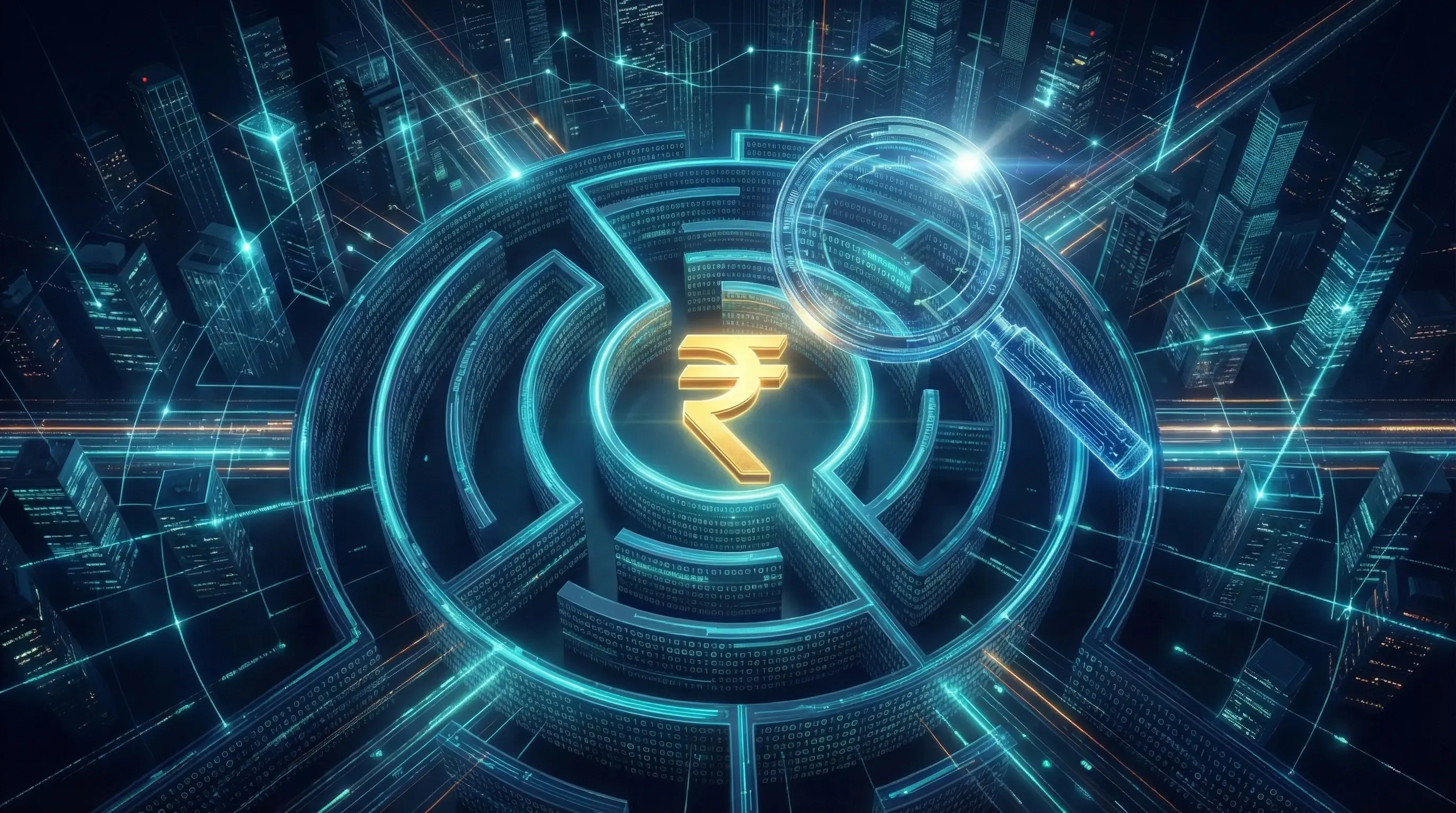
Unraveling the Prevention of Money Laundering Act, 2002: A Comprehensive Guide
This comprehensive guide provides a detailed analysis of India's Prevention of Money Laundering Act, 2002 (PMLA), covering its core objectives, stringent provisions, the powers of the Enforcement Directorate (ED), landmark Supreme Court judgments, and the implications of integrating the GSTN.
The Prevention of Money-Laundering Act, 2002 (PMLA) stands as a formidable pillar in India’s legal architecture against financial crimes. Enacted to combat the pervasive threat of money laundering, this comprehensive statute provides a robust framework for preventing such illicit activities, confiscating properties derived from them, and fostering international cooperation to tackle this global menace. This article delves deep into the nuances of the PMLA, its objectives, key provisions, the powers of enforcement agencies, and the significant judicial pronouncements that have shaped its implementation.
What is PMLA and What are Its Core Objectives?
The full form of PMLA is the Prevention of Money-Laundering Act. At its core, the PMLA is a specialized criminal law enacted by the Parliament of India to address the critical issue of money laundering. It came into force on July 1, 2005, and has since undergone several amendments to strengthen its provisions and widen its scope.
The primary objectives of the Prevention of Money-Laundering Act, 2002 are multifaceted and aimed at preserving the integrity of India’s financial system:
- Prevent and Control Money Laundering: The foremost objective is to prohibit and regulate the act of money laundering in all its forms.
- Confiscate Tainted Property: The Act provides for the attachment and confiscation of property derived from or involved in money laundering, ensuring that criminals do not enjoy the fruits of their illicit activities.
- Penalize Offenders: It lays down stringent punishments for those found guilty of the offense of money laundering.
- Establish Adjudicating Authorities: The PMLA provides for the establishment of an Adjudicating Authority and an Appellate Tribunal to handle matters related to attachment, confiscation, and other issues arising under the Act.
- Impose Obligations on Financial Institutions: The Act mandates that banking companies, financial institutions, and intermediaries maintain records of transactions, verify the identity of their clients, and report suspicious transactions to the Financial Intelligence Unit – India (FIU-IND).
- Foster International Cooperation: It facilitates cooperation with other countries to combat money laundering and related crimes.
The Offense of Money Laundering: Section 3 Explained
Section 3 of the PMLA provides a broad and inclusive definition of the offense of money laundering. It states that anyone who directly or indirectly attempts to indulge, knowingly assists, or is a party to any process or activity connected with the “proceeds of crime,” and projects it as untainted property, shall be guilty of money laundering.
The explanation to this section further clarifies that the offense is committed if a person is involved in any of the following activities related to the proceeds of crime:
- Concealment
- Possession
- Acquisition
- Use
- Projecting it as untainted property
- Claiming it as untainted property
An important aspect of this definition is that the process or activity connected with the proceeds of crime is considered a continuing one, as long as the person is enjoying the benefits of such proceeds.
Understanding “Proceeds of Crime” and “Scheduled Offenses”
The concept of “proceeds of crime” is central to the PMLA. Section 2(1)(u) of the Act defines it as any property derived or obtained, directly or indirectly, by any person as a result of criminal activity related to a “scheduled offense,” or the value of any such property.
A “scheduled offense” refers to a list of offenses specified in the Schedule to the PMLA. These are also known as predicate offenses, as they form the foundation for initiating a money laundering investigation. The Schedule is divided into three parts:
- Part A: Enlists offenses under various acts such as the Indian Penal Code, 1960; the Narcotic Drugs and Psychotropic Substances Act, 1985; the Prevention of Corruption Act, 1988; and the Unlawful Activities (Prevention) Act, 1967.
- Part B: Includes offenses that are also listed in Part A but with a value of Rs 1 crore or more.
- Part C: Deals with trans-border crimes and underscores the commitment to tackling money laundering on a global scale.
Powers of Authorities: The Enforcement Directorate (ED)
The Directorate of Enforcement (ED) is the primary agency responsible for investigating and prosecuting offenses under the PMLA. The Act vests the ED with significant powers to effectively combat money laundering:
Search and Seizure (Section 17)
If an authorized officer (not below the rank of Deputy Director) has reason to believe, based on material in his possession, that a person has committed money laundering, is in possession of proceeds of crime, or relevant records, they can authorize a search of any building, place, or vehicle. They can also seize any record or property that may be relevant to the proceedings. If seizure is not practical, the officer can issue an order to freeze such property.
Provisional Attachment of Property (Section 5)
This is a crucial power that allows the Director or an authorized officer to provisionally attach property for up to 180 days. This can be done if there is reason to believe that a person is in possession of proceeds of crime and these are likely to be concealed or transferred to frustrate confiscation proceedings. This action can be initiated after a police report or a complaint for a scheduled offense has been filed.
Adjudication and Confirmation (Section 8)
Within 30 days of the provisional attachment, a complaint must be filed with the Adjudicating Authority. The Authority then issues a notice to the concerned person to explain the source of the property. After hearing the parties and reviewing the material, if the Adjudicating Authority determines that the property is involved in money laundering, it confirms the attachment.
Taking Possession and Confiscation (Sections 8 and 9)
Once the attachment is confirmed, the Director can take possession of the property. Upon the conclusion of a trial, if the Special Court finds that money laundering has occurred, it orders the confiscation of the property to the Central Government. This confiscated property then vests absolutely with the Central Government, free from all encumbrances.
Power to Arrest (Section 19)
An authorized officer can arrest a person if they have reason to believe, based on material in their possession, that the person has committed an offense punishable under the PMLA. The grounds for such an arrest must be informed to the person as soon as possible.
Legal Recourse for Affected Parties
The PMLA provides a mechanism for individuals aggrieved by the actions of the authorities to seek legal recourse:
- Appeal to the Appellate Tribunal (Section 26): Any person aggrieved by an order of the Adjudicating Authority or the Director can file an appeal with the Appellate Tribunal within 45 days. The Tribunal, after hearing the parties, can confirm, modify, or set aside the order. The Appellate Tribunal is a statutory body established to ensure a fair and structured process for redressal.
- Appeal to the High Court (Section 42): A person aggrieved by a decision of the Appellate Tribunal can appeal to the High Court within 60 days on any question of law or fact.
The Burden of Proof: A Paradigm Shift (Section 24)
One of the most stringent provisions of the PMLA is the concept of reverse burden of proof. Section 24 of the Act states that in any proceeding relating to the proceeds of crime:
- In the case of a person charged with the offense of money laundering, the court will presume that such proceeds are involved in money laundering, unless the contrary is proved.
- In the case of any other person, the court may presume that the proceeds of crime are involved in money laundering.
This provision places a significant onus on the accused to prove their innocence, a departure from the general principle of “innocent until proven guilty.”
Stringent Bail Conditions: The Twin Tests of Section 45
Getting bail under the PMLA is an uphill task due to the stringent conditions laid down in Section 45. This section makes offenses under the Act cognizable and non-bailable. It imposes two conditions for granting bail, often referred to as the “twin tests”:
- The Public Prosecutor must be given an opportunity to oppose the bail application.
- Where the Public Prosecutor opposes the bail, the court must be satisfied that there are reasonable grounds for believing that the accused is not guilty of the offense and is not likely to commit any offense while on bail.
These conditions are mandatory and have been a subject of intense legal debate. However, exceptions are provided for individuals under 16 years of age, women, and sick or infirm persons.
Landmark Judgment: Vijay Madanlal Choudhary v. Union of India
The Supreme Court’s judgment in Vijay Madanlal Choudhary v. Union of India in July 2022 is a watershed moment in the history of the PMLA. The Court upheld the constitutional validity of several contentious provisions of the Act, thereby strengthening the hands of the enforcement agencies. The key takeaways from the judgment are:
- Validity of Twin Bail Conditions: The Supreme Court upheld the stringent twin conditions for bail under Section 45, reasoning that they are a reasonable restriction to tackle the serious economic offense of money laundering.
- Reverse Burden of Proof Upheld: The court affirmed the constitutionality of the reverse burden of proof under Section 24.
- Powers of ED Confirmed: The judgment validated the ED’s powers of arrest, search, seizure, and attachment of property.
- Admissibility of Statements: The Court ruled that statements recorded by ED officers under Section 50 of the PMLA are admissible in evidence and do not violate the right against self-incrimination.
However, the Supreme Court has agreed to review this judgment, specifically on the issues of not providing a copy of the Enforcement Case Information Report (ECIR) to the accused and the reversal of the presumption of innocence.
The Integration of GSTN under PMLA: A Game Changer
In a significant development in July 2023, the Goods and Services Tax Network (GSTN) was brought under the ambit of the PMLA. This move allows for the sharing of information between the GSTN and the ED, enabling a more integrated approach to tackling financial crimes.
The integration of GSTN data with PMLA investigations has several crucial implications:
- Enhanced Monitoring: It allows authorities to cross-reference GST data with other financial information to identify suspicious transactions and potential money laundering activities.
- Curbing Tax Evasion: The move is expected to be a major deterrent to tax evasion, as it will be easier to detect fake invoicing and other fraudulent practices used to launder money.
- Strengthening Investigations: Access to GSTN data provides a valuable tool for the ED to trace the flow of illicit funds and build stronger cases against offenders.
This strategic integration is aimed at creating a more transparent and accountable financial ecosystem in India, making it harder for individuals and businesses to engage in financial irregularities.
Conclusion: A Potent Weapon Against Financial Crime
The Prevention of Money-Laundering Act, 2002, has evolved into a powerful and comprehensive legal instrument in India’s fight against economic offenses. With its wide-ranging powers of investigation, stringent bail conditions, and a framework for international cooperation, the PMLA poses a significant deterrent to those involved in the complex web of money laundering. The recent inclusion of GSTN under its purview further fortifies its capabilities. While the Act’s stringent provisions have been a subject of debate, the judiciary, particularly through the Vijay Madanlal Choudhary case, has largely upheld their necessity in tackling a crime that poses a grave threat to the nation’s economic stability and integrity. As financial crimes continue to evolve, the PMLA will undoubtedly remain a critical and dynamic tool in safeguarding India’s financial system.
Frequently Asked Questions (FAQ) about the PMLA
1. What is the full form of PMLA? The full form of PMLA is the Prevention of Money-Laundering Act. It is an Act of the Parliament of India enacted to prevent and control money laundering.
2. What is the main objective of the Prevention of Money Laundering Act, 2002? The primary objective is to combat money laundering and to provide for the confiscation of property derived from, or involved in, money laundering. It aims to prevent criminals from legitimizing their ill-gotten gains and to preserve the integrity of the nation’s financial system.
3. What constitutes the offense of money laundering under Section 3 of the PMLA? Under Section 3, money laundering is broadly defined. It includes anyone who directly or indirectly attempts to indulge, knowingly assists, or is involved in any activity connected with the proceeds of crime, including its concealment, possession, acquisition, use, and projecting or claiming it as untainted property.
4. What is a “scheduled offense” in the context of the PMLA? A scheduled offense is a predicate criminal offense listed in the Schedule of the PMLA. The commission of a scheduled offense that generates illicit funds (“proceeds of crime”) is a prerequisite for initiating a money laundering investigation under the PMLA.
5. Who investigates cases under the PMLA? The primary agency for investigating and prosecuting offenses under the PMLA is the Directorate of Enforcement (ED).
6. Are the bail conditions under PMLA different from regular criminal law? Yes, they are significantly more stringent. Section 45 of the PMLA imposes twin conditions for bail: the court must have reasonable grounds to believe the accused is not guilty and is not likely to commit any offense while on bail. This is a departure from the standard bail provisions under the Code of Criminal Procedure (Cr.P.C.).
7. What does the “reverse burden of proof” under Section 24 of the PMLA mean? It means that once a person is charged with the offense of money laundering, the court will presume that the alleged proceeds of crime are involved in money laundering. The burden then shifts to the accused to prove that their assets are not tainted, which is the reverse of the general legal principle where the prosecution must prove guilt.
8. What happens to a PMLA case if the accused is acquitted of the scheduled offense? As affirmed by the Supreme Court in the Vijay Madanlal Choudhary case, if a person is discharged or acquitted of the underlying scheduled offense, there can be no offense of money laundering against them. The PMLA proceedings cannot continue, and any attached property must be returned.
9. Why was the Goods and Services Tax Network (GSTN) brought under the PMLA? Bringing GSTN under the PMLA allows the Enforcement Directorate to access crucial tax data. This integration helps in identifying suspicious transactions, curbing large-scale tax evasion and fraudulent input tax credit claims (which can generate proceeds of crime), and tracing the financial trail of laundered money more effectively.
10. What legal options does a person have against an attachment order by the ED? A person aggrieved by a provisional attachment order under Section 5 can present their case before the Adjudicating Authority. If the Authority confirms the attachment, the aggrieved person can file an appeal with the Appellate Tribunal within 45 days. A further appeal against the Tribunal’s order can be made to the High Court within 60 days.
11. Is an Enforcement Case Information Report (ECIR) the same as a First Information Report (FIR)? No. The Supreme Court has held that an ECIR is an internal document of the ED and is not equivalent to an FIR. Consequently, it is not mandatory for the ED to provide a copy of the ECIR to the accused.
12. Can a statement given to an ED officer be used against the person in court? Yes. As per the Supreme Court’s ruling in Vijay Madanlal Choudhary, ED officers are not considered “police officers.” Therefore, statements recorded by them under Section 50 of the PMLA are admissible as evidence in court and are not barred by the right against self-incrimination.


